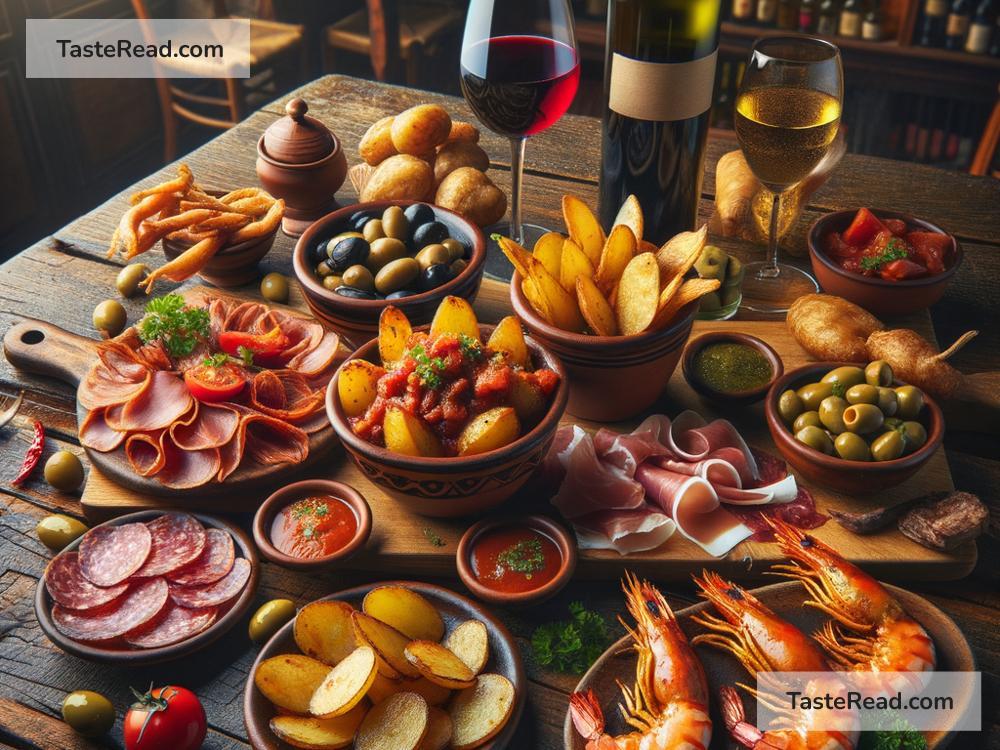The Evolution of Spanish Tapas: A Journey Through Flavor and Tradition
Spanish tapas are tiny plates of food that bring flavor, joy, and tradition to the table. They are a symbol of Spanish culture, enjoyed by locals and tourists alike. But tapas didn’t always exist in the form we know today. Over centuries, tapas have evolved from simple snacks to creative culinary experiences. Let’s take a closer look at how these delightful dishes have changed over time.
What Are Tapas?
Tapas are small portions of food served in bars and restaurants across Spain. They can be hot or cold, simple or elaborate, and range from olives and cheese to fried calamari and meatballs. Tapas are meant to be shared, making them a sociable way of eating. Instead of ordering one big meal, you order a variety of tapas to taste and enjoy together.
The word “tapas” comes from the Spanish verb tapar, which means “to cover.” Legend has it that the first tapas were slices of bread or ham placed on top of wine glasses to cover them and keep flies away. Over time, these covers evolved into snacks that complemented the drink.
How Tapas Began
The history of tapas dates back hundreds of years. In the Middle Ages, people in Spain suffered from hunger and poor nutrition. To combat illness, King Alfonso X of Castile reportedly ordered bars to serve small portions of food whenever someone ordered a drink. This message spread across the country, creating a tradition of pairing food with alcohol.
Another popular story involves Andalusia, a region in southern Spain where tapas may have started. Workers needed mid-day snacks to keep energized in the hot sun, so bars began serving small plates of food for a quick bite. During this time, tapas were simple and practical, like bread, olives, cured meats, or cheese.
Tapas in the 20th Century
For centuries, tapas were a humble tradition rooted in everyday life. They were enjoyed by farmers, workers, and locals, mostly as a quick snack. But things began to change during the 20th century.
As Spain developed economically and socially, its culinary scene expanded. The culture of tapas became more widespread, and they started appearing in cities rather than just small towns. Bars in urban areas began competing to offer tastier and more unique tapas to attract customers. The traditional plates of olives and ham evolved into creative dishes such as patatas bravas (spicy potatoes with sauce), albóndigas (meatballs), and calamares fritos (fried squid).
Tourism also played a role in the evolution of tapas. During the mid-20th century, Spain became a popular travel destination for people from around the world. Tourists fell in love with the custom of sharing small plates while sipping wine or beer. This attention put tapas on the global map and encouraged Spanish chefs to experiment with ingredients and flavors.
Modern Tapas: Creativity Takes Center Stage
Tapas have embraced modern cooking techniques and international influences while staying true to their roots. Today, tapas range from simple, traditional dishes to gourmet creations served in upscale restaurants. This modern approach to tapas is sometimes called “tapas fusion,” blending Spanish flavors with cuisines from other countries, like Japanese or Mexican.
Chefs have taken tapas to new heights by using high-quality ingredients and innovative presentations. For example, they might serve shrimp with garlic in a sleek glass or pair manchego cheese with exotic fruit sauces. Some restaurants even offer tasting menus featuring tapas as an art form, making the experience more immersive.
The rise of Michelin-starred tapas restaurants has elevated the reputation of Spanish cuisine worldwide. Rather than being seen as just snacks, tapas are now celebrated as a sophisticated dining experience.
Tapas Culture Today
Despite their evolution, tapas still hold an important place in Spanish society. They remain rooted in the idea of sharing food with friends and family. Spanish people often go out for tapeo, which means hopping from one bar to another to try different tapas. It’s a lively and social activity, creating connections between people through food.
Each region in Spain offers unique tapas that reflect its local flavors. In Galicia, you might find octopus seasoned with paprika (pulpo a la gallega). In Andalusia, gazpacho (cold tomato soup) is a common choice. In Madrid, churros with chocolate sauce can even be considered a sweet tapa!
The tradition has spread far beyond Spain. Tapas bars and restaurants have opened in many countries, bringing the Spanish way of eating to people around the globe. Although some international versions of tapas may stray from tradition, they keep the spirit of sharing and enjoying small bites alive.
A Symbol of Spain
Tapas are more than just food. They represent Spain itself—a culture that values good company, lively conversations, and flavorful meals. The way tapas have evolved over time shows how traditions can adapt and grow while keeping their essence intact.
From small slices of bread covering drinks to gourmet plates in award-winning restaurants, tapas have come a long way. Yet they remain a cherished part of Spanish life, bringing people together one small plate at a time.
So, the next time you share a table filled with olives, potatoes, and grilled prawns, remember that you’re tasting centuries of history, creativity, and camaraderie. ¡Buen provecho! (Enjoy your meal!)
This blog article explores how Spanish tapas have evolved over the years, blending tradition with modern creativity. Whether served in rustic bars or luxurious dining spaces, these small dishes continue to bring people closer together through food and flavor.


